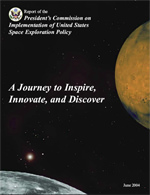What would our Milky Way galaxy look like if we could travel outside it and snap a picture? It might look a lot like a new image by NASA’s Spitzer Space Telescope of a spiral galaxy called NGC 7331 – a virtual twin of our Milky Way.
The picture, which can be viewed at http://photojournal.jpl.nasa.gov/catalog/PIA06322 , shows our twin as never before. Its swirling arms spin outward from a central bulge of light, which is outlined by a ring of actively forming stars.
“Being inside our galaxy makes it difficult to see what’s going on in the center,” said Dr. J.D. Smith, a member of the team that observed NGC 7331, and an astronomer at the University of Arizona, Tucson. “By looking at a very similar galaxy, we gain a bird’s eye-view of what the entire Milky Way might look like.”
Such an outside perspective will teach astronomers how our own galaxy, as well as others like it, might have formed and evolved.
The latest observations are the first in a large-scale effort to observe 75 nearby galaxies with Spitzer’s highly sensitive infrared eyes. Called Spitzer Infrared Nearby Galaxies Survey, the program will combine Spitzer data with that from other ground- and space-based telescopes operating at wavelengths ranging from ultraviolet to radio to create a comprehensive map of the selected galaxies.
The program’s first target, NGC 7331, was chosen in part for its striking similarities to the Milky Way. While these so-called twin galaxies do not share the same parents, they have many features in common, including number of stars, mass, spiral arm pattern and star-formation rate of a few stars per year. Whether the Milky Way has an inner star-forming ring like that of NGC 7331 is not known. NGC 7331 is located about 50 million light-years away in the constellation Pegasus.
The new Spitzer image demonstrates the power of the telescope’s infrared eyes to dissect galaxies into their various parts. Taken by the telescope’s infrared array camera, the false-colored picture readily distinguishes NGC 7331’s arms (brownish red), central bulge (blue) and star-forming ring (yellow). The composition of materials making up these regions was also revealed by the Spitzer observations: the central bulge consists primarily of older stars; the ring possesses a large amount of gas and dusty organic molecules called polycyclic aromatic hydrocarbons, which typically glow when illuminated by newborn stars; and the arms contain these same dust grains to a lesser degree. Polycyclic aromatic hydrocarbons are also found on Earth, on burnt toast and in car exhaust among other places.
Data from Spitzer’s infrared spectrograph instrument were also used to show that the center of NGC 7331 harbors either an unusually high concentration of massive stars, or a moderately active black hole about the same size as the one lurking at the core of our galaxy.
These findings will appear in two papers in the September issue of a special supplement to the Astrophysical Journal. Dr. Michael W. Regan of the Space Telescope Institute, Baltimore, Md., is lead author of a paper detailing observations from the infrared array camera, and Smith is lead author of a paper on the infrared spectrograph results. The Spitzer Infrared Nearby Galaxies Survey project is conducted by a team of about 25 scientists from 12 institutions, and is led by principal investigator Dr. Robert C. Kennicutt of the University of Arizona, Tucson.
Launched August 25, 2003, the Spitzer Space Telescope is the fourth of NASA’s Great Observatories, a program that also includes the Hubble Space Telescope, Chandra X-ray Observatory and Compton Gamma Ray Observatory.
JPL manages the Spitzer Space Telescope mission for NASA’s Office of Space Science, Washington, D.C. Science operations are conducted at the Spitzer Science Center at the California Institute of Technology in Pasadena. JPL is a division of Caltech. Spitzer’s infrared spectrograph was built by Cornell University, Ithaca, N.Y., and Ball Aerospace Corporation, Boulder, Colo. The instrument’s development was led by Dr. Jim Houck of Cornell. Spitzer’s infrared array camera was built by NASA Goddard Space Flight Center, Greenbelt, Md. The camera’s development was led by Dr. Giovanni Fazio of Smithsonian Astrophysical Observatory, Cambridge, Mass.
Additional information about the Spitzer Space Telescope is available at http://www.spitzer.caltech.edu.
Original Source: NASA/JPL News Release

